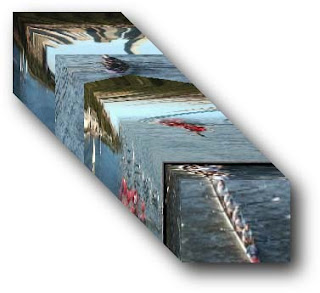
Bohus Blahut has a great post today about another forgotten video distribution format: Cartrivision.
[...]The format is called Cartrivision, and it dates all the way back to 1972. It was the first such format developed and sold in the USA. The unusual carts are square - the reels are one atop the other inside. It recorded only every third field of video and displayed it three times - a clever way to use the technology of the day to yield a decent picture and still fit a whole movie into the 8 inch square cassette.
The player was built into a number of specially made televisions, making the buy-in a hefty $1350 (nearly $6800 in today's money). Blank carts could record TV shows using the inbuilt timer, and there were pre-recorded movies and special interest programs.
Since there were no corner rental stores, you'd choose your film (the advertising copy does mention the availability of adult films, no surprise there...) from a catalog and the cartridge would be shipped to your Cartrivision dealer. You couldn't buy feature films to keep, nor could you rewind the cartridge at home. If you wanted to watch the movie again, you'd have to take it back to the dealer and pay a fee to re-rent and rewind the flick.
Why? Cartrivision was developed in cooperation with the film industry, and these were the stipulations they placed on this new home-based movie experience. It does smack a lot of the many current format wars, and the tyrannical terms of digital rights management. To be fair, home movie rental was unfamiliar turf for the studios back then, and at that point they made all of their money from a film's theatrical release and possibly a rare showing on TV.[...]
Cartrivision: The USA's First Crack At Video Cassettes












